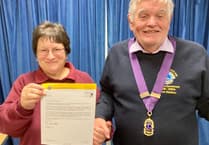We are aware that some of our patients are concerned about accessing services at Launceston Medical Centre. Although we are doing what we can to improve the situation, we must appreciate the challenges faced by general practice reflect the wider problems in the NHS. Most GP Practices have vacancies for GPs and we have seen applications for nursing fall by almost 20% in the last year.
Furthermore, we have a larger population who are living longer and who experience more complex health needs. The average GP practice has 2,224 more patients than in 2015. This is due to the increase in our population but coincides with a decrease in GPs across the country. The number of fully qualified full-time equivalent GPs has dropped by 1,808 since 2015. The total number of patients per GP has, on average, therefore increased by 17% to 2,260 patients per GP.
Increasingly, GPs are also moving to part-time posts in an attempt to control their workload and reduce stress, ill-health and burn out. This means that the overall quantity of GPs nationally has dropped and the number in full-time jobs has reduced even further.
GP work time is counted in half-day clinical sessions which, inevitably given our population growth, are filled with lots of patient appointments. However, after each of these clinical session GPs also must complete administrative work. This includes interpreting investigation results, generating prescriptions, actioning requests from secondary care, communicating with hospital specialists or carrying out urgent clinical assessments, such as home visits. This means that a half-day session lasts much longer than a half day and GPs can end up working full-time hours on a part-time contract. This is why so few GPs feel a full-time contract (8 sessions) is sustainable.
Alongside this clinical and administrative work, the GP partners are also responsible for running the business and finding ways to manage the workload to continue to give patients the best access to medical help possible. Over the last two years they have also been responsible for the roll out of COVID vaccinations.
The complexity of health needs mean that consultations take time to meet the multiple needs of patients, but with a larger population, more appointments are needed daily. At present, Launceston Medical Centre currently provide 500 daily appointments, of which nearly 60% are face to face. In addition, we provide regular care to nursing homes and carry out visits to our most vulnerable patients. There is also a backlog of patients following the covid pandemic either waiting for hospital appointments or presenting late with symptoms.
Due to the difficulty recruiting GPs, practices have been recruiting staff in additional roles, such as paramedics, nurse practitioners, pharmacists, mental health workers and social prescribers to help support patients. However, these other health professionals are also in short supply as more practices rely on a wider team to deliver patient care. At Launceston Medical Centre we are lucky to have a fantastic team working with the GPs and we are actively looking to recruit more members for our team.
All this means that reception staff/patient advisors have an increased role to play in making sure the patient gets an appointment with the best clinician to help with their problem. Phone calls take longer as some clinical details are required to make this decision. Phone lines therefore are busier and most telephone systems in general practice are struggling to cope with the number of phone calls coming in. Launceston Medical Centre responded to complaints back in November about the telephone wait times and while data shows a reduction in waiting times, over the last two months there has also been a huge surge in appointments required due to an increased prevalence of infectious diseases such as scarlet fever, flu and of course ongoing covid infections putting additional pressure on general practice.
Although e-consults are available as an alternative way to contact the practice, many patients find it easier to phone. At Launceston Medical Centre (and many other similar practices) our current system is set up such that we keep the vast majority of appointments free for on the day booking. This allows us the flexibility to see all patients that require an urgent appointment on the day. However, this does mean that when all the available routine appointments are booked, we have to turn away patients and only help with problems that are genuinely urgent for that day. When this happens, we ask the patients with less urgent problems to ring on another day when there may be more appointments available. Understandably this leads to frustration with long waits on the phone, patients getting cut off (as the phone line will only hold 20 calls at a time) and finding that the situation is the same on the next day. This had been a particular problem over the last couple of months due to the large number of face-to-face urgent appointments needed for the recent surge in strep A, COVID and flu infections, alongside increased staff illness due to the same infections.
We understand our system needs to change to manage the demand and make sure each patient gets an appointment the first time they contact the medical centre, within the right timeframe and with the right clinician for their need. Alongside our clinical work, we are currently looking at potential solutions to this problem and hope to be able to implement a change soon.
Andrew Yardley
Practice manager
Launceston Medical Centre




